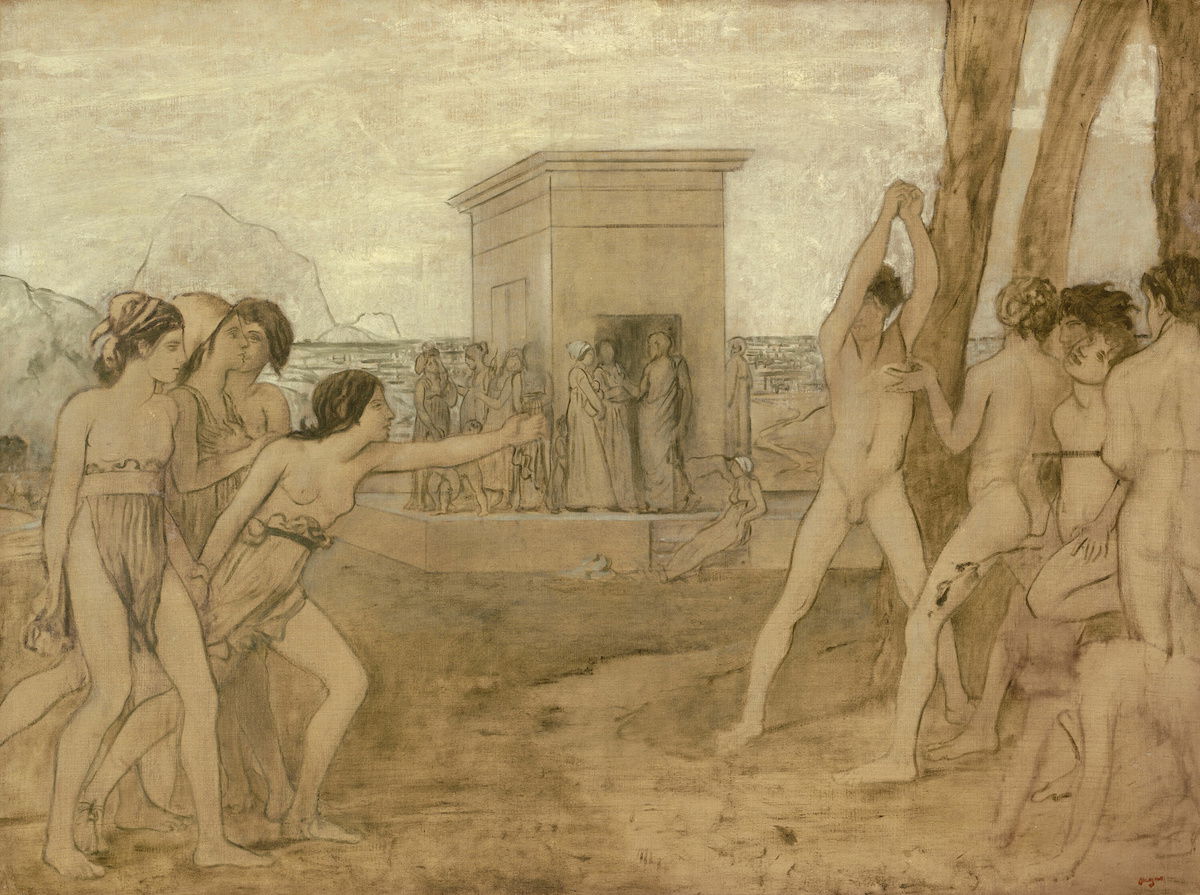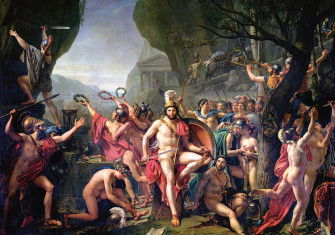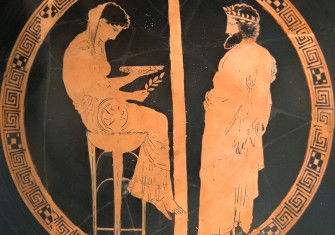‘Sparta and the Commemoration of War’ and ‘The Killing Ground’ review
Two very different volumes, Sparta and the Commemoration of War and The Killing Ground: A Biography of Thermopylae, grapple with the myth of Sparta.

These are books of very different kinds, not exactly chalk and cheese, but certainly apples and oranges. All three authors are military historians, if of dissimilar stripes and with very varying direct, practical experience of warfare. (Full disclosure: born in London in 1947, your reviewer has absolutely none.) But only one of the trio – Matthew Sears – is a classicist proper, which matters greatly when the subjects in question are the fascinating but also hugely controversial ancient Spartans and their historiography.
‘If you thought history was boring, you haven’t read about the Spartans.’ So trumpets the ‘Hybrid Athlete’ website, which advocates – vigorously and not entirely unhistorically – pumping iron the ancient Spartan way. Whatever one thinks of the latter exercise (count me out), neither of these books could remotely be considered boring. Happily, too, both are by no means confined to antiquity. Besides, what matters for each of them is not only the ‘what’ or the ‘how’ of history, but how what (may have) happened has been commemorated – or mythicised. For there was (and still is) a Spartan myth, or ‘mirage’ – but what exactly that consists of, and how to read it critically against other, reliable contemporary evidence as survives, is often beyond the capacity of the less professionally equipped.
The ‘commemoration’ that Sears has mostly in mind is ancient, and largely confined to the Archaic and Classical periods (c.700-300 BC in round figures). His use or interpretation of ‘commemoration’ is, however, somewhat unsettlingly expansive. This is not just a study of the ancient equivalents of the Whitehall Cenotaph, shall we say, though there is a good deal of that, usually well done. Instead we are given long passages of narrative of various aspects of Spartan militarism, not precisely defined, and confined to military actions, by no means all of which can be justified as strictly necessary background for appreciating Spartan commemoration proper.
Not surprisingly, and quite rightly, the Battle of Thermopylae – pitting Greeks against Persians and other invaders in high summer 480 BC – is accorded centre stage, as a major plank in Sparta’s commemoration platform. The Spartans themselves made a black broth of it, ideologically speaking, and other ancient Greeks followed their lead, negatively as well as positively. Sears, however, wants to make it even more than that: namely the major instance of Sparta’s ultraconservative adherence to glory and fame above all other considerations and, more specifically, to exclusively personal and collective glory in the ‘beautiful death’ – as opposed to any genuine concern for the interests of any other Greeks ever. The Delphic maxim ‘nothing to excess’ comes to mind.
I’ve often thought what a good idea it would be to have a book that deals not only with ‘the’ Battle of Thermopylae but also with the many other engagements fought before and well after, as recently as the Second World War, in this key pass in north-central Greece named for its thermal springs. The Killing Ground is that book, tricked out with a veritable arsenal – indeed, battery – of supporting illustrations (culminating in Jacques-Louis David’s Léonide aux Thermopyles) and maps, all superb, written expressly for nonspecialist readers. The co-authors make no bones about it: the uber-famous August 480 BC affair – the second of their 16 battles and 27 ‘actions’ at Thermopylae – ‘may be the most famous battle in human history’ or at any rate ‘one of the most famous killing grounds in history’ – certainly one of the greatest stories ever (to be) told. The book parades an apparatus of scholarship in endnotes, though these are used not only to document views expressed in the text or to suggest further, alternative readings, but also to settle the odd score (experto credi).
This is a book that can be read serially, dipped into chapter by engaging chapter, armchair polemology of the best sort. But caveat emptor: space forbids my drawing attention to much in the way of the book’s detail – and for a good long stretch of its contents I wouldn’t pretend to having any expertise whatsoever, not much, anyhow, beyond the 12th action or seventh battle of 191 BC. However, when it comes to the climactic, 480 BC clash, there’s an absolutely fundamental and crucial historiographical issue at stake: the reliability of our nearest surviving contemporary written source that can be called in any way historical, the Histories of Herodotus.
Cole and Livingston do not diss the Halicarnassian completely – how could they, and then go on to write anything about the battle in any detail? But they do adopt what one might call a ‘radical-sceptic’ stance, doubting some of his claims and crediting other alternative ancient sources. On one – to me – utterly vital point, the precise composition of King Leonidas’ famous ‘300’, they ignore him altogether. Herodotus had visited Sparta and socialised with leading Spartans. There, he had learned by heart the individual names of all the 300. His work being the denial of official history, he was not afraid to report – contrary to ‘popular’ belief still current today – that two of the 300 had not died in the pass. And about one thing Herodotus was absolutely certain: that among Leonidas’ criteria for selecting them (they weren’t identical with his regular bodyguard of 20-year-olds, also 300 in number) was that they had to be fathers of living sons. There’s no mention of that in The Killing Ground.
From ancient history to modern myth, there’s a current fad for Spartan athleticism – the ‘Spartan race’ or ‘Spartan workout’ (the terrifying Leeds ‘Cage Spartan Training’ is one example) – which is not necessarily harmful in itself. But a fad for all things ancient Spartan military can be, if, for instance, one is a member of the ‘Molon Labe’ gun-worshipping brigade and/or prepared to storm the US Capitol in the guise of a Spartiate trooper. Sears mentions in his prologue ‘the lobbying of the National Rifle Association’ and later rightly warns against ‘the worrying militarism inherent in such modern monuments and many modern interpretations of ancient material’. Just as worrying to an ancient historian is (as Sears puts it) ‘the trend in recent scholarship to downplay Sparta’s uniqueness’. Sears himself fights valiantly, and I’d say persuasively, against any such trend. The ancient Spartans really were one of a kind. As was – and is – the battleground (intellectual as well as topographical) of Thermopylae – Cole and Livingston have so valiantly demonstrated.
-
Sparta and the Commemoration of War
Matthew A. Sears
Cambridge University Press, 272pp, £30
Buy from bookshop.org (affiliate link) -
The Killing Ground: A Biography of Thermopylae
Myke Cole and Michael Livingston
Osprey, 319pp, £25
Buy from bookshop.org (affiliate link)
Paul Cartledge is Emeritus A.G. Leventis Professor of Greek Culture, Clare College, Cambridge and author, most recently, of Thebes: The Forgotten City of Ancient Greece (Picador, 2020).






